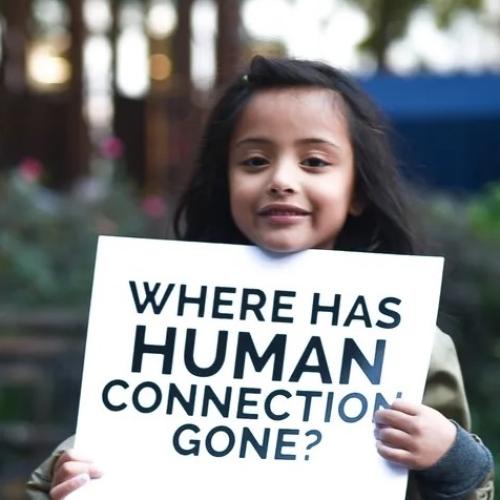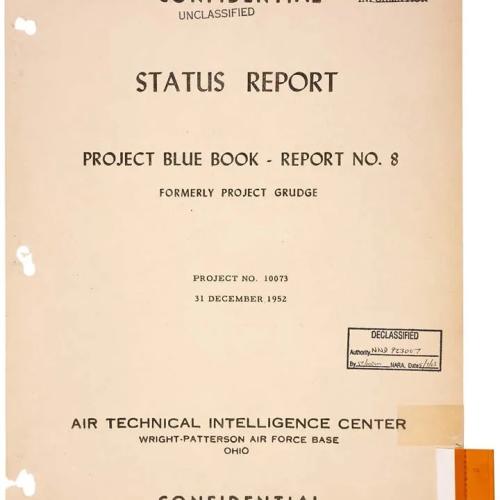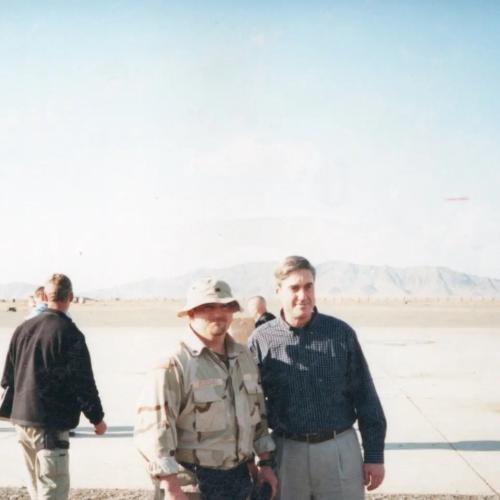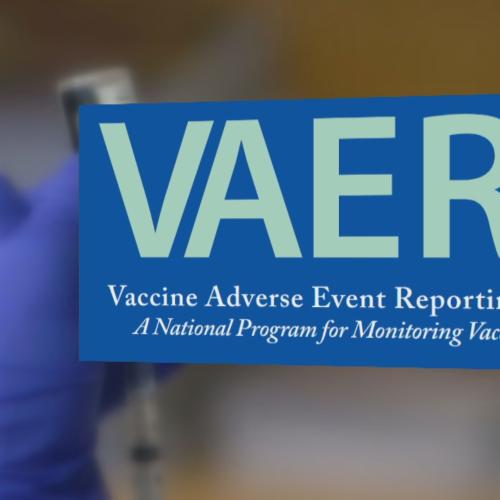Inspiring: Animal Wonders Media Articles
Below are key excerpts of inspiring news articles on animal wonders from reliable news media sources. If any link fails to function, a paywall blocks full access, or the article is no longer available, try these digital tools.
For further exploration, delve into our Inspiration Center.
Dogs have such exquisitely sensitive noses that they can detect bombs, drugs, citrus and other contraband in luggage or pockets. Is it possible that they can sniff out even malaria? And when might that be useful? A small pilot study has shown that dogs can accurately identify socks worn overnight by children infected with malaria parasites even when the children had cases so mild that they were not feverish. In itself, such canine prowess is not surprising. Since 2004, dogs have shown that they can detect bladder cancer in urine samples, lung cancer in breath samples and ovarian cancer in blood samples. Trained dogs now warn owners with diabetes when their blood sugar has dropped dangerously low and owners with epilepsy when they are on the verge of a seizure. Other dogs are being taught to detect Parkinsons disease years before symptoms appear. The new study ... does not mean that dogs will replace laboratories. But for sorting through crowds, malaria-sniffing dogs could potentially be very useful. Some countries and regions that have eliminated the disease share heavily trafficked borders with others that have not. For example, South Africa, Sri Lanka and the island of Zanzibar have no cases but get streams of visitors from Mozambique, India and mainland Tanzania. And when a region is close to eliminating malaria, dogs could sweep through villages, nosing out silent carriers people who are not ill but have parasites in their blood that mosquitoes could pass on to others.
Note: Explore a treasure trove of concise summaries of incredibly inspiring news articles which will inspire you to make a difference.
Koko, the gorilla who mastered sign language and showed the world what great apes can do, has died. She died Tuesday in her sleep at age 46. "Koko touched the lives of millions as an ambassador for all gorillas and an icon for interspecies communication and empathy," the [The Gorilla Foundation] said. The western lowland gorilla was born at the San Francisco Zoo in 1971 and began to learn sign language early in life. Researchers moved her to Stanford in 1974 and established The Gorilla Foundation, a non-profit organization that works to preserve and protect gorillas. Koko and The Gorilla Foundation later moved to the Santa Cruz Mountains. She liked to read and be read to. She purred at parts of books she particularly enjoyed. She was very maternal toward kittens, and has had several throughout her lifetime. Her "tenderness" showed people how loving a gorilla can be, the foundation said. Koko made famous friends like Fred Rogers, who appeared on TV as Mr. Rogers, and Robin Williams. She used her sign language skills to communicate with them. She was said to have understood some 2,000 words of spoken English, and could usually keep up with conversations. Koko appeared in several documentaries and twice on the cover of National Geographic. The first cover featured a photo she'd taken of herself in a mirror. The foundation will continue its work on conservation and preservation of gorillas with continued projects, including a sign language application featuring Koko.
Note: Don't miss touching video of Koko the gorilla available at the link above. Explore a treasure trove of concise summaries of incredibly inspiring news articles which will inspire you to make a difference.
Every month, a new cycle of training begins with yet another class of veterans in a program run by the northern Florida K9s for Warriors. The seven-year-old nonprofit is one of dozens of private organizations that offer psychiatric service dogs to address the military's mental health crisis. The numbers are startling on veteran suicides, and this is working, said Rory Diamond, a former federal prosecutor who quit to become chief executive of K9s for Warriors. A recent [Purdue University] study ... used standard questionnaires to assess PTSD symptoms and other aspects of mental health among 141 K9s for Warriors applicants, half teamed with a service dog and half on a wait list. Those with dogs showed significantly lower levels of post-traumatic stress, depression and social isolation, with higher levels of psychological well-being. Dogs have provided services to humans for millennia, often as hunting and herding partners. But not until World War I were they systematically trained to assist people with disabilities, as guides for the blind. Service dogs now prompt deaf people when a doorbell rings, retrieve pills for people in wheelchairs and alert people with diabetes to blood sugar spikes. Psychiatric service dogs [blend the missions of] of task-oriented service canines and animals seen as providing emotional support. While the dogs paired with veterans with PTSD are commonly trained to wake them from nightmares ... advocates also laud their ability to soothe a panicking vet and provide companionship.
Note: Explore a treasure trove of concise summaries of incredibly inspiring news articles which will inspire you to make a difference.
New research reveals that orcas are able to imitate human speech, in some cases at the first attempt, saying words such as hello, one, two and bye bye. The creatures are already known for their ability to copy the movements of other orcas, with some reports suggesting they can also mimic the sounds of bottlenose dolphins and sea lions. We wanted to see how flexible a killer whale can be in copying sounds, said [study co-author] Josep Call. We thought what would be really convincing is to present them with something that is not in their repertoire and in this case hello [is] not what a killer whale would say. Only a fraction of the animal kingdom can mimic human speech, with brain pathways and vocal apparatus both thought to determine whether it is possible. That is what makes it even more impressive even though the morphology [of orcas] is so different, they can still produce a sound that comes close to what another species, in this case us, can produce, said Call. Wikie, a 14-year-old female orca ... had previously been trained to copy actions performed by another orca when given a human gesture. After first brushing up Wikies grasp of the copy command, she was ... exposed to five orca sounds she had never heard before. Finally, Wikie was exposed to a human making three of the orca sounds, as well as six human sounds. Wikie was often quickly able to copy the sounds, whether from an orca or a human, with all of the novel noises mimicked within 17 trials.
Note: Learn more about the amazing world of marine mammals.
[Humpbacks whales] deliberately interfere with attacking killer whales to help others in distress. They dont just defend their own babies or close relatives. They intervene on behalf of other species - a gray whale calf with its mother, a seal hauled out on an ice floe, even an ocean sunfish. Humpbacks act to improve the welfare of others; the classic definition of altruism. Robert Pitman, a marine ecologist ... describes a pivotal encounter he witnessed in Antarctica in 2009. A group of killer whales washed a Weddell seal they were attacking off an ice floe. A pair of humpbacks ... inserted themselves into the action. One of the huge humpbacks rolled over on its back and the 180-kilogram seal was swept up onto its chest between the whales massive flippers. And when the seal started slipping off, the humpback, according to Pitman, gave the seal a gentle nudge with its flipper, back to the middle of its chest. Moments later, the seal scrambled off and swam to the safety of a nearby ice floe. Pitman started asking people to send him similar accounts. Soon he was poring through observations of 115 encounters between humpbacks and killer whales, recorded over 62 years. So are humpbacks compassionate? When I pose the ... question to Pitman he [responds], When a human protects an imperiled individual of another species, we call it compassion. If a humpback whale does so, we call it instinct. But sometimes the distinction isnt all that clear.
Note: Learn more about the amazing world of marine mammals.
Two dolphins have been recorded having a conversation for the first time after scientists developed an underwater microphone which could distinguish the animals' different "voices". Researchers have known for decades that the mammals had an advanced form of communication. But scientists have now shown that dolphins alter the volume and frequency of pulsed clicks to form individual "words" which they string together into sentences in much the same way that humans speak. Researchers at the Karadag Nature Reserve, in Feodosia, Ukraine, recorded two Black Sea bottlenose dolphins, called Yasha and Yana, talking to each other in a pool. Each dolphin would listen to a sentence of pulses without interruption, before replying. Lead researcher Dr Vyacheslav Ryabov, said: “Essentially, this exchange resembles a conversation between two people. “Each pulse represents a phoneme or a word of the dolphin's spoken language. “The analysis of numerous pulses registered in our experiments showed that the dolphins took turns in producing [sentences] and did not interrupt each other, which gives reason to believe that each of the dolphins listened to the other's pulses before producing its own. “This language exhibits all the design features present in the human spoken language. This indicates a high level of intelligence and consciousness in dolphins. Their language can be ostensibly considered a highly developed spoken language, akin to the human language.”
Note: Learn more about the amazing world of marine mammals.
On the Monday following the Orlando massacre, 12 golden retrievers arrived in the Florida city. They had come to offer comfort to some of the victims of the attack, the families of those killed and the emergency medical workers. The animals are part of the K-9 Comfort Dogs team, a program run by the Lutheran Church Charities. Founded in 2008, the team has comforted victims of the 2013 Boston Marathon bombing and the 2012 Sandy Hook shooting. Tim Hetzner, the president of the charity, said that the dogs in Orlando were helping to provide a feeling of safety, allowing those in distress to relax their guard and express their vulnerability during a difficult time. Weve had a lot of people here that start petting the dog, and they break out crying, he said. The dogs and their 20 handlers have visited hospitals and churches, and attended vigils and memorial services. On Wednesday, they visited some of the hospitalized victims. People couldnt get out of their bed, so we had to bring the dog up so they could pet the dog while laying down, Mr. Hetzner said. They start smiling, and in a couple cases, they started talking as much as they could. Comfort dogs ... are often employed by therapists and medical doctors to help soothe patients. Studies have shown that they can help to reduce feelings of anxiety and depression as well as the symptoms of post-traumatic stress disorder. There are more than 120 dogs in the K-9 Comfort Dog unit, in 23 states. All of them have received extensive training similar to that of a service dog.
Note: Explore a treasure trove of concise summaries of incredibly inspiring news articles which will inspire you to make a difference.
A man in Whittier has gone the distance for a tiny hummingbird his once-feral dog helped rescue. As Ed Gernon explains, last year he adopted a German shepherd mix named Rex, that at the time fought other dogs and killed cats. He was dangerous, said Gernon of Rex. He was an animal that had learned to live on the streets and to survive on his own. One afternoon just a month after Rexs adoption, the dog became the rescuer, saving a very tiny and sick hummingbird. And he suddenly stopped and he would not move, he recalls. I mean its tiny and its dead as far as Im concerned. Its covered in ants. Its got no feathers. But thats not where the story ends. Hummer as she is called is now living in Gernons home a year later. But its been a long road. In fact, Gernon had to nurse Hummer back to health (quite literally). He feeds her a special formula every 15 minutes from sun up to sun down and even taught her how to fly using a hair dryer. You find yourself doing stuff you never thought in a million years you would do, he said. And even Rex is willing to share his water bowl with Hummer. It was this little creature. This fragile creature that the whole world wanted to kill and he was trying to protect her so I thought Id go the distance, said Gernon. Its been more than a year since Hummer arrived and Gernon knows eventually she will spread her wings. Its time for her to start mating and I keep leaving the doors and windows open thinking shell leave, he said. But while shes here, he says her little wings have made a big impact.
Note: Don't miss the inspiring video of this amazing love story at the link above. Explore a treasure trove of concise summaries of incredibly inspiring news articles which will inspire you to make a difference.
Ever since a 71-year-old Brazilian man rescued a struggling penguin, he's been receiving regular visits from his feathered friend. Joao Pereira de Souza, a retired bricklayer, lives ... just off the coast of Rio de Janeiro. In 2011, he spotted a starving Magellanic penguin drenched in oil on the beach near his house. Naming the penguin Dindim, Pereira de Souza fed him every day until he was strong enough to leave, according to a video from the University of Rio de Janeiro. But the penguin refused to go. Pereira de Souza decided to row a boat out into the water and drop Dindim off to encourage him to swim home. But when he rowed back to shore, he found the penguin waiting for him. "He stayed with me for 11 months and then, just after he changed his coat with new feathers, he disappeared," Pereira de Souza told TV Globo, a Brazilian TV network. Magellanic penguins regularly swim thousands of kilometres a year to breeding spots on the coast of Argentina and Chile. From time to time, penguins show up in warmer Brazilian waters. Many of Pereira de Souza's friends thought that when Dindim finally left, that was it for the human-bird friendship. But a few months later, Dindim returned and found Pereira de Souza. He visits for about four months, a ritual kept for the last five years. "He arrives in June and leaves to go home in February, and every year he becomes more affectionate," Pereira de Souza told TV Globo. De Souza appears to be the only person who can get near Dindim. If others try, he pecks them or waddles away.
Note: Don't miss a video on this incredible friendship. Explore a treasure trove of concise summaries of incredibly inspiring news articles which will inspire you to make a difference.
Animal communicators are people who can fully communicate with an animal just as they would with a normal human person. The communication is telepathic and 2-way. Animal communicators have most likely existed for a long time, probably in every single culture in the world. Anna Breytenbach is a professional animal communicator. Anna was summoned in the case of the black leopard who had been moved to a South African wild cat park. He was given the name Diabolo (similar to the Spanish word for devil) and ... snarled at anyone who went near. The owners of the park were afraid of approaching him. They summoned an animal communicator (Anna) for help. After communicating with the leopard, she learnt that one of the reasons for him being upset was that he thought something was expected of him. The other reason was that he was worried about what had happened to 2 young cubs at the last place he was being kept. When Anna relayed this to the park owner, [he] broke down and cried. He confirmed that they were indeed 2 young cubs at the previous place. He told Anna to reassure the black leopard that nothing would be expected of him here - and that the 2 young cubs were safe. This relieved the leopard to the point where he opened up and became friendly. His name was subsequently changed to something more fitting Spirit. There is no way Anna could possibly have known this information beforehand. She learnt it telepathically. She was told this by an animal!
Note: Watch videos of several animal communicators in action at the link above. Explore a treasure trove of concise summaries of incredibly inspiring news articles which will inspire you to make a difference.
Traditionally, you wouldn't gift someone a rat. Tanzania-based NGO Apopo, however, thinks rats make excellent gifts. So much so that they've launched an adopt-a-rat program, which allows participants to sponsor the animal. Despite the creatures' reputation for thieving and spreading disease, [Apopo's founder Bart] Weetjens has proven that rats can ... save lives. Apopo's rats have actually saved thousands. They are highly trained to sniff out land mines and detect tuberculosis - two scourges that have had a tremendously negative impact across the African continent. And his rats are fast. A single rat can clear 200 square feet in an hour (done manually, the same area would take 50 hours to clear). A TB-detection rat can evaluate 50 samples in eight minutes (almost a day's work for a lab technician). In 2006, Weetjens started testing his "hero rats," as he dubs them, on the mine fields in Mozambique, a country that at that time was one of the worst affected by landmines, thanks mainly to a civil war that ended in 1992. Since then, Apopo has cleared the country of 6,693 landmines, 29,934 small arms and ammunition, and 1,087 bombs. Mozambique is on track to be free of landmines by the year's end. In 2005, the World Health Organization (WHO) declared a TB crisis in Africa. It's a problem Weetjens realized he could address with his sniffer rats. So far, they've analyzed over 260,000 samples from health clinics in Dar es Salaam. They are cheap to train, cheaper to procure, and plentiful.
Note: Explore a treasure trove of concise summaries of incredibly inspiring news articles which will inspire you to make a difference.
August 9, 2014, was one of the most memorable days of my life. On that day I entered a maximum-security prison in Lancaster, Calif. to witness an extraordinary event connecting the lives of some of its inmates with a pack of rescued shelter dogs. Five lucky dogs ... were pulled from a high-kill shelter in Los Angeles and entered this Level 4 prison for a chance at a better life. Earlier this year, Karma Rescue, a nonprofit that saves at-risk dogs from high-kill shelters across Southern California, partnered with the California State Prison Los Angeles County in Lancaster to create "Paws for Life," a program that matches rescued dogs with inmates who train them to boost their odds of adoption. Fourteen inmates were ... selected to train five shelter dogs who stayed at the prison this summer for a 12-week program. From the very beginning, the program struck a chord with everyone involved. Karma Rescue's founder Rande Levine wrote, "Men who had not seen an animal in decades were openly emotional at the sight of the beautiful creatures before them. Just petting our dogs brought many to happy tears. It was a day I will never, ever forget." Several times a week, professional dog trainer Mark Tipton and several dedicated Karma Rescue volunteers drove out to the prison to instruct the inmates on how to train their assigned dogs for 'Canine Good Citizen' certification, a designation that increases the chance that a dog will be successfully adopted.
Note: Don't miss the moving pictures of this inspiring program at the link above. Explore a treasure trove of concise summaries of incredibly inspiring news articles which will inspire you to make a difference.
My research team and I were following a school of bottlenose dolphins near shore ... off Los Angeles, California. The dolphins were still feeding in circle near shore, when suddenly, one individual changed direction heading out toward deeper water. A minute later, the rest of the school turned to follow. Seeing them abruptly leave a foraging ground and change direction came as a surprise to the research team. I decided to follow them. The dolphins increased their speed. Somewhere near three miles offshore the dolphin group stopped, forming a sort of ring around a dark object in the water. “Someone’s in the water!” yelled my assistant, standing up and pointing at the seemingly lifeless body of a girl. As the boat neared, she feebly turned her head toward us, half-raising her hand as a weak sign for help. If we didn’t act immediately, the girl would die. We [pulled] the frail and hypothermic body on board. “She is cyanotic,” said one of my researchers, also a lifeguard, after a cursory examination. “She has severe hypothermia. We need to get her warm!” We managed to get some of her wet garments off and wrap her in a blanket. We took turns keeping her warm by huddling with her under the blanket. A couple of hours later, we were all waiting outside the emergency room at the Marina del Rey hospital. The ER doctor came out to talk with us. The girl, it seems, would pull through, and he thanked us for our quick action. He tells us the girl was vacationing in L.A. from Germany and, as the letter found in her plastic bag explained, she was attempting suicide. If we hadn’t found her, if the dolphins hadn’t led us offshore when they did, to that specific place, she would have died.
Note: This article has been adapted from the book Dolphin Confidential: Confessions of a Field Biologist. For more on the amazing capacities of dolphins and other marine mammals, as well as the threats they face from human activities, click here. For a treasure trove of great news articles which will inspire you to make a difference, click here.
Bees may soon be able to take some of the sting out of cancer by detecting it early and getting patients into treatment sooner. Honeybees are known for their exquisitely sensitive sense of smell. They don't have noses, but their feet, tongues and antennae are packed with olfactory glands. They can also be quickly trained to do their "waggle dance" when they associate a specific smell with a food source. Taking advantage of these facts, Portuguese scientist Susana Soares has invented a two-chambered glass dome that uses bees to snuff out cancer. "The glass objects have two enclosures: a smaller chamber that serves as the diagnostic space and a bigger chamber where previously trained bees are kept for the short period of time necessary for them to detect general health," Soares wrote on her website. "People exhale into the smaller chamber, and the bees rush into it if they detect on the breath the odor that they were trained to target." Soares said she could train bees in 10 minutes to identify cancer and other diseases, such as tuberculosis and diabetes in their early stages. By exposing the insects to the odor molecules produced by an illness and then feeding them sugar, they learn to associate the smell with a food reward. Soares said that her bee chamber was an inexpensive, sustainable and highly accurate diagnostic tool. And, she points out, bees, as well as wasps, are already used regularly to sniff out land mines and illegal drugs.
Note: Explore a treasure trove of concise summaries of incredibly inspiring news articles which will inspire you to make a difference.
This is your moment of zen today. Two adventurers set out in a canoe and happened upon a [flock of] starlings (collectively known as a murmuration) doing their amazing collective dance in the sky. Watch the video. Just take it in. The starlings' coordinated movements do not seem possible, but then, there they are, doing it. Scientists have been similarly fascinated by starling movement. Those synchronized dips and waves seem to hold secrets about perception and group dynamics. Last year, Italian theoretical physicist Giorgio Parisi took on the challenge of explaining the [phenomenon]. What he found ... is that the math equations that best describe starling movement are borrowed "from the literature of 'criticality,' of crystal formation and avalanches -- systems poised on the brink, capable of near-instantaneous transformation." They call it "scale-free correlation," and it means that no matter how big the flock, "If any one bird turned and changed speed, so would all the others." It's a beautiful phenomenon to behold. And neither biologists nor anyone else can yet explain how starlings seem to process information and act on it so quickly. It's precisely the lack of lag between the birds' movements that make the flocks so astonishing.
Note: Don't miss the hauntingly beautiful video at the link above. For more, click here. For a treasure trove of great news articles which will inspire you to make a difference, click here.
Cruising in their custom wheelchairs, Chili and Arlo are the center of attention wherever they go. But for patients at the Baylor Institute for Rehabilitation in Dallas, these two canine caregivers are also an inspiration. Many of the patients are new to wheelchairs, Linda Marler, the programs director [said]. When they see Chili and Arlo, they say, If those dogs can do it, so can I. Chili and Arlo are the only dogs with disabilities among the 90 specially trained therapy dogs that participate in Baylors Animal Assisted Therapy program. The canine volunteers make weekly visits to lift the spirits of patients who have suffered traumatic injuries or a stroke. We use the dogs to create more of a home atmosphere and also to get a response, Marler said. Shes found that animals will often elicit a reaction when every other method has failed. For head injury patients, a dog has been the first thing they respond to when emerging from a coma, Marler said. For others, being with a dog is what motivates them to speak or throw a ball. Or use a wheelchair. Marler says some of the patients who had been reluctant to use one are willing to give it a shot after spending time with Arlo and Chili.
Scientific research shows that many animals are very intelligent and have sensory and motor abilities that dwarf ours. Dogs are able to detect diseases such as cancer and diabetes and warn humans of impending heart attacks and strokes. Elephants, whales, hippopotamuses, giraffes, and alligators use low-frequency sounds to communicate over long distances, often miles; and bats, dolphins, whales, frogs, and various rodents use high-frequency sounds to find food, communicate with others, and navigate. Many animals also display wide-ranging emotions, including joy, happiness, empathy, compassion, grief, and even resentment and embarrassment. Many animals display profound grief at the loss or absence of a relative or companion. Do animals marvel at their surroundings, have a sense of awe when they see a rainbow, or wonder where lightning comes from? Sometimes a chimpanzee, usually an adult male, will dance at a waterfall with total abandon. Ravens and many other animals live by social norms that favor fairness and justice. And outside of Buenos Aires, Argentina, a dog rescued an abandoned baby by placing him safely among her own newborn puppies. Amazingly, the dog carried the baby about 150 feet to where her puppies lay after discovering the baby covered by a rag in a field.
Known as the 'Crocodile Man', Costa Rican animal lover Chito swims, plays and even feeds Pocho the giant crocodile in what is one of the world's most unlikely friendships. 'This is a very dangerous routine but Pocho is my friend and we have a good relationship,' says 52-year-old Chito. 'He will look me in the eye and he does not attack me. It is too dangerous for anyone else to come in the water. It is only ever the two of us.' The bizarre friendship began nearly 20 years ago when Chito rescued the 980-pound crocodile after finding him close to death ... shot in the left eye by a cattle farmer after preying on a herd of cows. Chito enlisted the help of several friends to load the massive reptile into his boat. Naming him 'Pocho' (meaning strength), the fisherman says he healed the reptile with medicine, food, and, more importantly, lots of care and attention. 'When I found him in the river after he was dying so I put him in my boat and I brought him into my house,' recalls Chito. 'He was very skinny, weighing only around 150 pounds, so I gave him chicken and fish and medicine for six months to help him recover.' During the recovery process, Chito stayed by Pocho's side, even sleeping with him at night. 'I just wanted him to feel that someone loved him, that not all humans are bad,' Chito says.
Note: Don't miss the great photos at the article link above.
Scientists have now documented behaviors like tool use and cooperative hunting strategies among whales. Orcas, or killer whales, have been found to mourn their own dead. Just three years ago, researchers at Mount Sinai School of Medicine in New York discovered, in the brains of a number of whale species, highly specialized neurons that are linked to, among other things, the use of language and were once thought to be the exclusive property of humans and a few other primates. Indeed, marine biologists are now revealing not only the dizzying variety of vocalizations among a number of whale species but also complex societal structures and cultures. Whales, we now know, teach and learn. They scheme. They cooperate, and they grieve. They recognize themselves and their friends. They know and fight back against their enemies. And perhaps most stunningly, given all of our transgressions against them, they may even, in certain circumstances, have learned to trust us. For all of their inherent elusiveness, the gray whales of Baja baffle scientists for the opposite reason: They cant seem to get enough of us humans. The question of why present-day gray-whale mothers, some of whom still bear harpoon scars, would take to seeking us out and gently shepherding their young into our arms is a mystery that now captivates whale researchers and watchers alike. There may be something far more compelling going on in the lagoons of Baja each winter and spring. Something, lets say, along the lines of that time-worn plot conceit behind many a film, in which the peaceable greetings of alien visitors are tragically rebuffed by human fear and ignorance. Except that in this particular rendition, the aliens keep coming back, trying, perhaps, to give us another chance.
Note: For many important reports from reliable sources on the amazing capabilities of marine mammals, as well as serious threats to their well-being and survival from human activities, click here.
After studying a cockatoo that grooves to the Backstreet Boys and about 1,000 YouTube videos, scientists say they've documented for the first time that some animals "dance" to a musical beat. The results support a theory for why the human brain is wired for dancing. In lab studies of two parrots and close review of the YouTube videos, scientists looked for signs that animals were actually feeling the beat of music they heard. The verdict: Some parrots did, and maybe an occasional elephant. But researchers found no evidence of that for dogs and cats, despite long exposure to people and music, nor for chimps, our closest living relatives. Why? The truly boppin' animals shared with people some ability to mimic sounds they hear, the researchers say. The brain circuitry for that ability lets people learn to talk, and evidently also to dance or tap their toes to music, suggests Aniruddh Patel of the Neurosciences Institute in San Diego. He proposed the music connection in 2006. He also led a study of Snowball that was published online Thursday by the journal Current Biology. A separate YouTube study, also published Thursday by the journal, was led by Adena Schachner, a graduate student in psychology at Harvard University. In sum, the new research "definitely gives us a bit of insight into why and how humans became able to dance," Schachner said. A video of Snowball bobbing his head and kicking like a little Rockette to music has been viewed more than 2 million times on YouTube since it was posted in 2007. Snowball's movements followed the beat of his favorite Backstreet Boys song ... even when researchers sped up the tune and slowed it down.
Note: To watch videos of Snowball dancing to the Backstreet Boys and Huey Lewis, click here.
Important Note: Explore our full index to key excerpts of revealing major media news articles on several dozen engaging topics. And don't miss amazing excerpts from 20 of the most revealing news articles ever published.
























































































